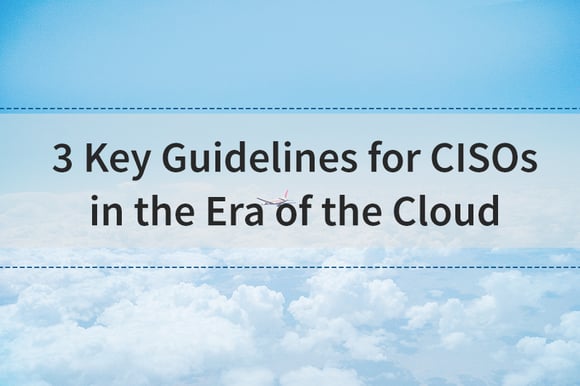Before the cloud, most business chose to store their data on internal servers they managed. Because of this, accessibility typically was limited to helping reduce how vulnerable a business's information was to hackers. With the inception of the cloud, companies have poured billions of dollars into this technology and the corresponding cyber security features. As information is instantly sharable anywhere in the globe and potentially no longer locally managed, this exposes vulnerabilities for both users and their companies. As the needs grow for access and data management including these enhanced security features, it was the Chief Information Security Officer (CISO) and his or her team that were delegated with the task of information security, storage, and data protection.
From the vantage point of the CISO, a growing concern may stem from not just having an increased budget for cyber security concerns, but having solutions that do not constrict operational efficiency. Problems exist with ill-fitting security products that aren't tuned to meet the customers or business needs. To help CISOs target the most important cloud security features they need and to give them the protection they require for their compliance departments, best practices and regulations, they may need the help of a third-party agency, testing and process improvement. The goal is balancing security with functionality.
Here's how to accomplish just that.

1. Utilize automation and third-party security agencies
Information Security Benefits
Security Policy Control Panels
2. Don't think restriction – give permission
 CISOs can be overly concerned with locking down their data so it can't be stolen, and that's where security analysts can help. With new cloud-based technologies, security analysts and third-party agencies that focus on layered controls, integration and ease of use with third-party security tools, and enhanced control panel features can thereby allow the CISO to have the best of both worlds working in conjunction with security analysts to minimize vicious attacks.
CISOs can be overly concerned with locking down their data so it can't be stolen, and that's where security analysts can help. With new cloud-based technologies, security analysts and third-party agencies that focus on layered controls, integration and ease of use with third-party security tools, and enhanced control panel features can thereby allow the CISO to have the best of both worlds working in conjunction with security analysts to minimize vicious attacks.Working in Partnership to Protect the Infrastructure
Using Honeypots to Improve Efficacy
A benefit to using this feature is it helps to give the advantage of a genuine OS service and application, thereby, mirroring a genuine user experience where an attack can take place. This insight, with the help of a third-party security team, can then provide data about compromised areas to develop the proper defense.
3. Keep in mind the basics of good security
Forward thinking CISOs know that every step matters as it relates to focusing on best practices, while working in an ever-evolving technological environment. It's also important that third-party agencies meet the needs of the firm based on what the CISO's business requires. Look for third party agencies that will provide security control capabilities and also offer flexibility to help as the business's cloud strategies evolve over time.
Garland Heart offers dynamic security tools and resources that can test and validate your infrastructure and vendors, thereby giving the CISO all the tools they need to mitigate attacks and incase the ability to take immediate action. With their customized solutions, they can tune into a business's diverse and unique needs to minimize threats, increase return on investment and help a business to protect their infrastructure.
Garland Heart has helped businesses in multiple regulated and non-regulated industries with their cloud infrastructure security features. At the forefront of cloud security, they work to validate the tools that businesses need to increase innovation in the workplace. With consistent results, Garland Heart has developed a thorough understanding of cloud features, the demands of users and IT departments, and ways to support the needs of CISOs and their firms.
Contact us today to learn more about how your organization can protect itself in the cloud era.



